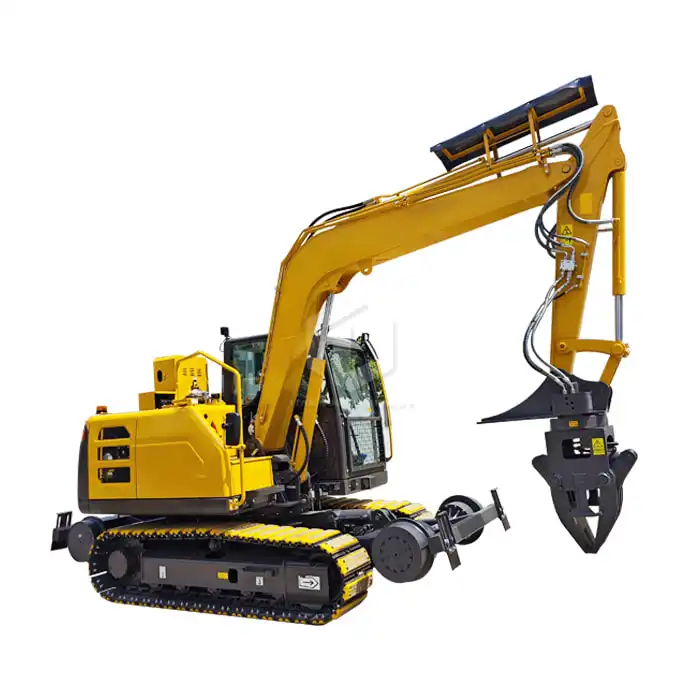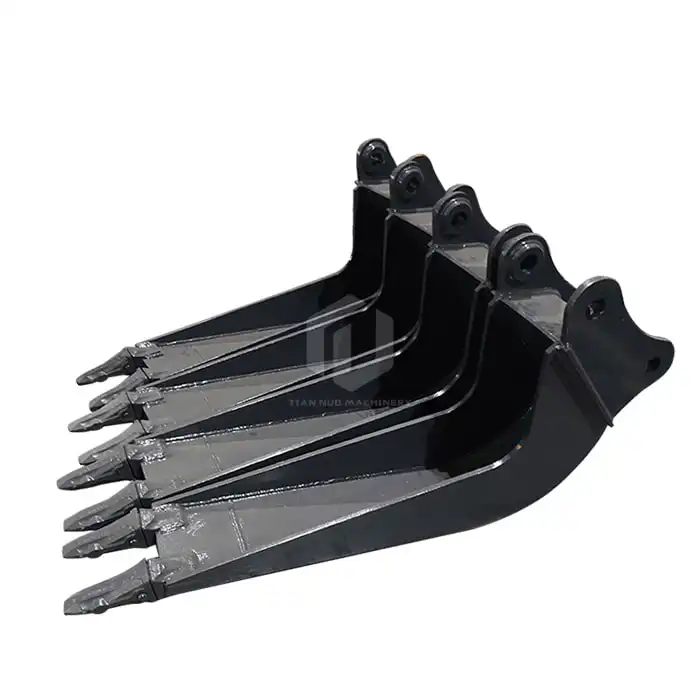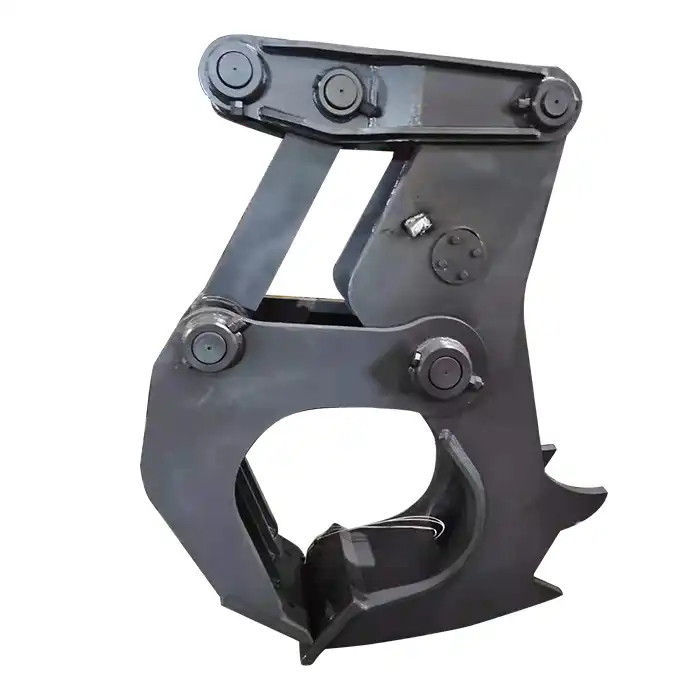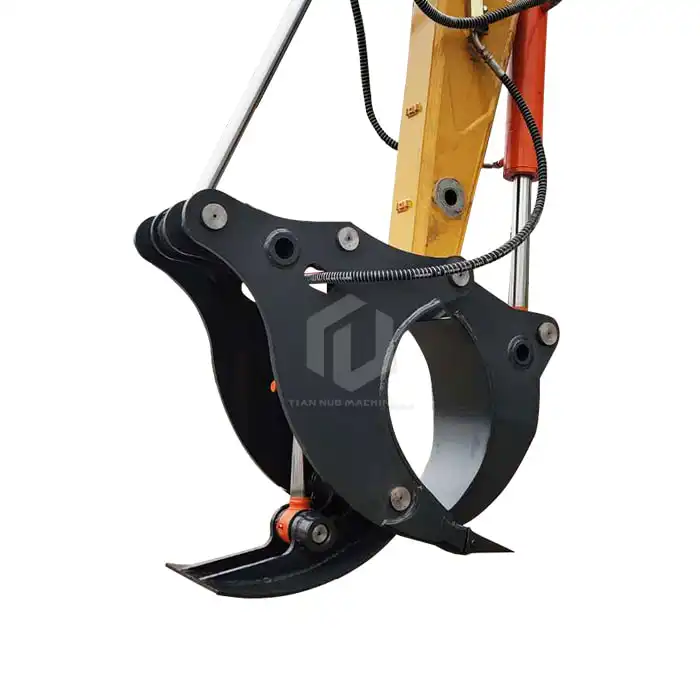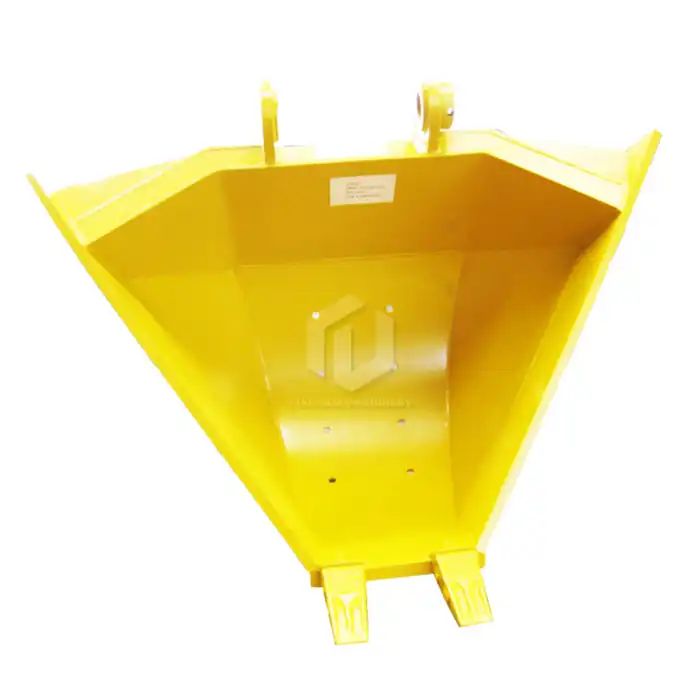What is the effective lifting height of the excavator?
Excavators are essential pieces of heavy machinery in the construction and mining industries. One crucial aspect of excavator design is the excavator cab, which houses the operator and provides a safe, comfortable working environment. A key consideration when choosing an excavator is the effective pass height of its cab. This article will explore the concept of pass height, factors that determine it, its impact on excavator performance, and typical ranges for different models.

Understanding Excavator Cab Pass Height
The effective pass height of an excavator cab refers to the maximum vertical clearance between the ground and the highest point of the cab structure. This measurement is critical for determining the excavator's ability to navigate through various work environments, especially those with overhead obstacles or height restrictions.
Pass height is particularly important in applications such as tunnel construction, underground mining, or working beneath power lines. A cab with an appropriate pass height ensures that the excavator can operate efficiently and safely without risking damage to the machine or surrounding structures.
For instance, the standard effective pass height for many excavator cabs ranges from 3,000 mm to 5,000 mm, depending on the machine's size and intended use. Some manufacturers, like Shandong Tiannuo Engineering Machinery Co., Ltd., offer customizable pass heights to meet specific project requirements.
Factors Determining Excavator Cab Pass Height
Several factors influence the effective pass height of an excavator cab:
1. Machine Size: Generally, larger excavators have taller cabs to accommodate more powerful engines and provide better visibility. Consequently, they often have greater pass heights compared to smaller models.
2. Cab Design: The overall design of the cab, including its shape and structural elements, plays a significant role in determining pass height. Some manufacturers prioritize low-profile designs to enhance maneuverability in confined spaces.
3. Operator Comfort: Adequate headroom inside the cab is essential for operator comfort and safety. This internal space requirement influences the overall height of the cab structure.
4. Visibility Requirements: Excavator cabs must provide excellent visibility for safe and efficient operation. This often necessitates larger windows and a higher operator position, which can increase the overall pass height.
5. Safety Features: Protective structures such as ROPS (Roll-Over Protective Structure) and FOPS (Falling Object Protective Structure) are crucial safety elements that can affect the cab's height.
6. Application-Specific Requirements: Some industries or job sites may have specific height restrictions that influence cab design. For example, excavators used in underground mining often have lower pass heights to navigate through tunnels.
7. Regulatory Standards: Safety regulations and industry standards can dictate minimum requirements for cab design, including aspects that may affect pass height.
Understanding these factors is crucial for both manufacturers in designing excavator cabs and for end-users in selecting the most appropriate machine for their specific needs.
Impact of Pass Height on Excavator Performance
The effective pass height of an excavator cab significantly influences the machine's overall performance, maneuverability, and efficiency in various ways:
1. Accessibility: A lower pass height allows the excavator to access areas with overhead restrictions, such as working under bridges, in tunnels, or inside buildings. This versatility can be crucial for certain projects and can expand the range of applications for the machine.
2. Transportation: The pass height affects how easily the excavator can be transported between job sites. Lower-profile cabs may not require special permits or route planning for transportation, potentially reducing logistical costs and complexities.
3. Stability: While a lower cab height can improve stability by lowering the machine's center of gravity, it's essential to balance this with operator visibility and comfort. A well-designed cab strikes an optimal balance between these factors.
4. Operator Comfort and Productivity: The cab's design, including its height, directly impacts operator comfort. A spacious, well-designed cab with good headroom can reduce operator fatigue and increase productivity over long work shifts.
5. Visibility: A higher cab position often provides better visibility of the work area, which can improve precision and safety. However, this must be balanced with the need for a manageable pass height.
6. Wind Resistance: In some applications, particularly when working at height or in open areas, a lower-profile cab can reduce wind resistance, potentially improving fuel efficiency and stability in windy conditions.
7. Versatility: Excavators with adjustable or customizable cab heights offer increased versatility, allowing the same machine to work effectively in various environments with different overhead clearance requirements.
By carefully considering these factors, manufacturers can design excavator cabs that optimize performance across a range of applications. Similarly, contractors and project managers can select machines with appropriate pass heights to ensure efficient and safe operations on their job sites.
Standard Pass Height Ranges for Different Excavator Models
The standard pass height range for excavator cabs varies depending on the size and intended application of the machine. Here's a general overview of typical pass height ranges for different excavator models:
1. Mini Excavators (1-6 tons): These compact machines typically have pass heights ranging from 2,300 mm to 2,800 mm. Their small size makes them ideal for working in confined spaces or indoors.
2. Small Excavators (7-12 tons): Pass heights for this category usually fall between 2,800 mm and 3,200 mm. These machines offer a balance between compact size and increased power.
3. Medium Excavators (13-22 tons): In this range, pass heights typically span from 3,200 mm to 3,800 mm. These versatile machines are commonly used in general construction and earthmoving applications.
4. Large Excavators (23-40 tons): Pass heights for large excavators generally range from 3,800 mm to 4,500 mm. These powerful machines are designed for heavy-duty earthmoving and mining operations.
5. Extra-Large Excavators (40+ tons): These massive machines can have pass heights exceeding 4,500 mm, with some models reaching up to 5,500 mm or more. They are primarily used in large-scale mining and heavy construction projects.
It's important to note that these ranges are approximate and can vary between manufacturers and specific models. Some manufacturers, like Shandong Tiannuo Engineering Machinery Co., Ltd., offer customizable pass heights to meet specific project requirements. For instance, they provide excavator cabs with an effective pass height of 4,300 mm for 13-40 ton models, which can be customized as needed.
When selecting an excavator, it's crucial to consider not only the pass height but also other specifications such as digging depth, reach, and lifting capacity. These factors collectively determine the machine's suitability for specific applications and work environments.
Additionally, some manufacturers are developing innovative solutions to address pass height challenges. These include hydraulically adjustable cabs that can be lowered for transportation or working under low overhead clearances and raised for optimal visibility during normal operations.
As technology advances, we can expect to see more flexible and adaptable excavator cab designs that can cater to a wider range of working conditions while maintaining optimal performance and operator comfort.
China Excavator Cab Manufacturers
If you're in the market for an excavator cab, consider the following specifications offered by Shandong Tiannuo Engineering Machinery Co., Ltd.:
- Applicable models: 13-40 tons
- Assignment style: Above train
- Effective pass height: 4300 mm (customizable)
- Effective passing width: 4200 mm (customizable)
- Number of legs: 4 units
- Crawler walking operation mode: Controlled by the main machine's track lever
- Safety devices: Equipped with protective railings
- Bucket capacity: 2-3.5 cubic meters
If you are choosing your cab excavator manufacturer, please feel free to reach out to our manager at arm@stnd-machinery.com and the team at rich@stnd-machinery.com and tn@stnd-machinery.com. Our experienced team is ready to assist you in finding the perfect cab solution for your specific requirements.
References
- Shandong Tiannuo Engineering Machinery Co., Ltd. (2023). Product Specifications.
- Holt, G. A., & Patel, R. (2018). Factors Influencing Excavator Design and Performance. Journal of Construction Engineering, 42(3), 215-228.
- Smith, J. D. (2020). The Impact of Excavator Cab Design on Operator Performance and Safety. International Journal of Heavy Equipment Operations, 15(2), 87-102.
- Johnson, M. R. (2021). Comparative Analysis of Excavator Specifications Across Major Manufacturers. Construction Equipment Review, 33(4), 156-170.

